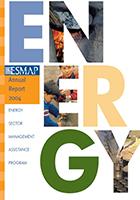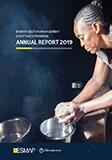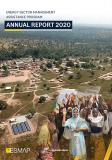Annual Reports

For the Energy Sector Management Assistance Program (ESMAP), 2004 was a year of accomplishments and a year of transition. The Program concluded its 2002-2004 Business Plan with a strong focus on energy-poverty activities, environmental sustainability, and energy market development.
This year ESMAP began the development of a new business strategy covering the next three years. The Program will continue to promote the role of energy in poverty reduction and economic growth in an environmentally responsible manner, but responding to several new challenges emerging in the energy sector - from the increased instability of the energy environment for developing countries, to the need to scale up renewable energy, and the urgent financial requirements for energy investments to serve the poor.
Monitoring the impacts of ESMAP activities continues to be a fundamental part of the Program's emphasis. In partnership with donors and developing countries, in 2004 ESMAP supported several activities focused on energy and poverty reduction, including a major review of best practices of rural electrification programs, an analysis of energy expenditures by the poor in 45 cities, and several activities on gender and energy linkages.
The work supported by ESMAP to address the energy-development-sustainability nexus included the promotion of renewable energy for development as a key element in meeting the challenge of reducing energy poverty and energy vulnerability. Progress was also made in developing methodologies and conducting research on the synergies between energy and development. This work connecting energy and the Millennium Development Goals enhances our understanding of the linkages between productive uses of energy and social development issues. Finally, ESMAP continued its work on sustainable energy markets. An assessment of the impact on the poor of more than ten years of energy sector reforms was completed.
There also was progress in the development of public-private partnerships that we hope will lead to private investment in crucial areas such as rural energy, energy efficiency, and energy production. Of particular note was the support for the interaction of business and development through roundtables, workshops, and ESMAP's involvement and support to the Global Village Energy Partnership (GVEP).
During 2004, the ESMAP portfolio under implementation grew slightly in number of activities (from 89 to 96) but decreased by 4 percent from US$21.2 million to US$20.3 million. This was partly due to the increased number of activities that were completed, and the consolidation of the portfolio in order to close the 2002-2004 Business Plan. During 2004, 39 new activities worth more than US$4.8 million were launched, a slight decrease from 2003 (44 activities launched for a value of US$5.8 million), and 49 activities worth US$7.8 million achieved financial closure.
World Bank. 2005. ESMAP Annual Report 2004. Washington, DC: World Bank. http://documents.worldbank.org/curated/en/868001468328176567/ESMAP-Annual-Report-2004


